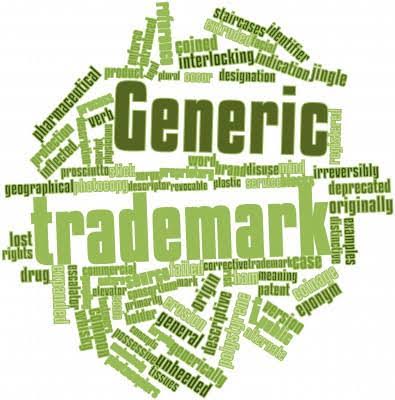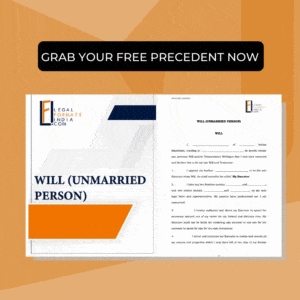By Ritabh Singh, Final Year student at the Government Law College, Mumbai
ritabhsingh44@gmail.com | Jan 03, 2024
INTRODUCTION
A trademark can simply be understood as a word, letter, shape of an object etc. which denotes a certain enterprise and which distinguishes it from other entities. To provide an example, the MNC Apple Inc. has trademarked the word “Apple” and the logo of a bitten apple [1](in its class of goods and services) which distinguishes it from its competitors. A trademark is an intellectual property, meaning it has been creatively invented to be used specifically by its inventor unless he sells the rights therein to a third party.
Trademarks have served an important function not only for companies but also for general consumers. It facilitates the creation of an association between the provided goods or services by the company and the general consumers. This association then furthers the value and reputation of the company.
Having a registered trademark also protects the created brand as it disallows other entities to use the trademark. Thus, once a trademark is registered with the relevant authority, other companies cannot use the trademark. To continue with the above-provided example, other companies, especially competitors, cannot use the trademark “Apple” for their activities, thereby protecting the value created by Apple.
STATUTORY DEFINITION
The Trade Marks Act of 1999 governs the law relating to trademarks in India. The following are the relevant definitions –
1. Section 2(m) : “mark” includes a device, brand, heading, label, ticket, name, signature, word, letter, numeral, shape of goods, packaging or combination of colours or any combination thereof;
2. Section 2(za) : “trade mark” means a mark capable of being represented graphically and which is capable of distinguishing the goods or services of one person from those of others and may include the shape of goods, their packaging and combination of colours;
A trademark is infringed when an entity, not being the registered proprietor or a person using by way of permitted use, uses in the course of trade, a mark which is identical with, or deceptively similar to, the trade mark in relation to goods or services in respect of which the trade mark is registered and in such manner as to render the use of the mark likely to be taken as being used as a trade mark [2].
TYPES OF TRADEMARKS
Trademarks can be generic, suggestive, fancy, arbitrary and descriptive. Generic and descriptive trademarks are difficult to register as they are of a general nature and have no distinct or secondary meaning. They simply describe the product or service provided by the company and use extremely common words as their mark. In contrast, fancy and arbitrary trademarks are registered much more easily and the use of them by other entities does not usually stand in court. Such trademarks are already unique as they may be invented words or may have no connection with the product or service at all or may also suggest a relation with the product or service, but do not describe it [3].
Generic and descriptive words are usually not registered as trademarks. However, some trademarks, even though being of a generic character, tend to develop a unique character in the psychology of general consumers and these consumers start associating that generic trademark with one entity only. The courts take into account certain elements while deciding if a particular generic trademark has attained a distinct meaning [4].
FACTORS MAKING A GENERIC TRADEMARK UNIQUE
It is well misunderstood that a generic word may never acquire distinctiveness and therefore may never be registered. This misconception has been answered by various courts in various judgements. The courts have held that where it is argued that a generic word has acquired distinctiveness, the burden of proof lies on the user of such mark to prove its distinct character.
The most important factor which makes a generic trademark unique is when a consumer having reasonable prudence develops a secondary meaning for the generic word and deeply associates it with the product or service rendered by the company. Only when a generic trademark acquires a distinct identity can it become a unique trademark [5]. A commonly used word can become uncommon in the eyes of the consumers, after which protection by the way of a registered trademark is awarded to the user.
The following are arguments in favour of proving a generic word has attained distinctiveness –
1. Huge market & investments in promotion [6] – If it is shown that a generic trademark is being used to describe a product or service rendered by a company having a huge consumer base and a substantial amount of money has been spent in the promotion of the trademark, it can be argued that the generic word being used to describe the product and service has acquired uniqueness due to the vast number of consumers of the same. The goodwill and reputation enjoyed by the company play a crucial role in the propoundment of this argument.
2. Addition of a unique prefix or suffix [7] – When a unique word is used as a prefix or suffix to a generic trademark, the entire trademark may acquire uniqueness and acquire a distinct identity. Such addition mixes the general word with unique words, thereby making the created word distinct. The interplay of words may result in trademark distinctiveness.
3. Long and exclusive use – When a generic trademark has been exclusively used for a long time, it can be argued to have created a unique identity in the eyes of the generic public. The general public, due to the long and exclusive use of a generic word by a company, has started associating that word only with such a company thereby granting it uniqueness.
4. No competition – If, in a particular class, a company does not have any competition and is the only provider of a good or service, the company may use a generic word as its trademark. The same logic can apply where the goods and services provided by different companies are substantially different and the mark is registered under different classes.
5. Not visually, phonetically or deceptively similar to any other mark [8]- Where a generic word is not visually, phonetically or deceptively similar in any manner to any other registered trademark, it can be argued that the word itself has developed a unique character and begs protection.
The convincing point for the court is that the generic and common word is no longer generic or common and cannot cause any confusion in the eyes of any man with reasonable prudence. Such a word has developed its own uniqueness and is well associated with the company by general consumers [9].
CONCLUSION
It will finally be the decision of the court to decide if a generic word has attained distinctiveness. The court carefully examines the facts and circumstances of each case and then decides the case on merits. In particular, the courts are careful about not creating a monopoly in favour of the user which then directly affects competition. The court also checks if the word can cause confusion in the minds of the general public. Lastly, courts may also issue stringent conditions in the use of a generic word as a registered trademark for its appropriate use and for ensuring healthy competition.
Endnotes
[1] https://www.apple.com/in/
[2] Ref to relevant provisions of the Trade Marks Act, 1999, specifically sec 29.
[3] M/S Matrimony.Com Limited v. Kalyan Jewellers India Ltd. 13th March 2020
[4] Hatsun Agro Product Ltd. v. Arokya Food Products (2016)
[5] Info Edge (India) Pvt Ltd vs. Shailesh Gupta 98 (2002) DLT 499
[6] DFL Limited v. Sohum Shoppe Limited (2015)
[7] Prem Ratan Rathi vs. Ashish Iron Trading Co (2013)
[8] Amritdhara Pharmacy vs. Satya Deo Gupta (1963)
[9] Lazmikant V. Patel vs. Chetanbhai Shah (2002)







